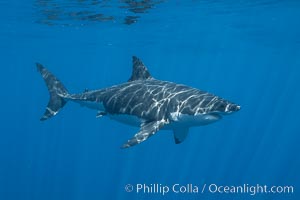
Great white shark, research identification photograph. A great white shark is countershaded, with a dark gray dorsal color and light gray to white underside, making it more difficult for the shark's prey to see it as approaches from above or below in the water column. The particular undulations of the countershading line along its side, where gray meets white, is unique to each shark and helps researchers to identify individual sharks in capture-recapture studies. Guadalupe Island is host to a relatively large population of great white sharks who, through a history of video and photographs showing their countershading lines, are the subject of an ongoing study of shark behaviour, migration and population size.
Species: Great white shark, Carcharodon carcharias
Location: Guadalupe Island (Isla Guadalupe), Baja California, Mexico
Image ID: 28763
Species: Great white shark, Carcharodon carcharias
Location: Guadalupe Island (Isla Guadalupe), Baja California, Mexico
Image ID: 28763
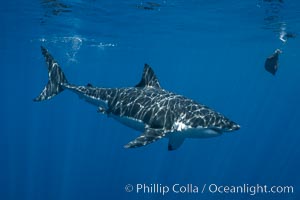
Great white shark, research identification photograph. A great white shark is countershaded, with a dark gray dorsal color and light gray to white underside, making it more difficult for the shark's prey to see it as approaches from above or below in the water column. The particular undulations of the countershading line along its side, where gray meets white, is unique to each shark and helps researchers to identify individual sharks in capture-recapture studies. Guadalupe Island is host to a relatively large population of great white sharks who, through a history of video and photographs showing their countershading lines, are the subject of an ongoing study of shark behaviour, migration and population size.
Species: Great white shark, Carcharodon carcharias
Location: Guadalupe Island (Isla Guadalupe), Baja California, Mexico
Image ID: 28764
Species: Great white shark, Carcharodon carcharias
Location: Guadalupe Island (Isla Guadalupe), Baja California, Mexico
Image ID: 28764
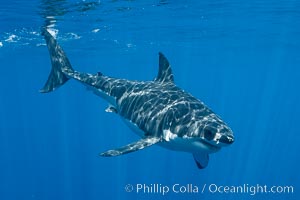
Great white shark, research identification photograph. A great white shark is countershaded, with a dark gray dorsal color and light gray to white underside, making it more difficult for the shark's prey to see it as approaches from above or below in the water column. The particular undulations of the countershading line along its side, where gray meets white, is unique to each shark and helps researchers to identify individual sharks in capture-recapture studies. Guadalupe Island is host to a relatively large population of great white sharks who, through a history of video and photographs showing their countershading lines, are the subject of an ongoing study of shark behaviour, migration and population size.
Species: Great white shark, Carcharodon carcharias
Location: Guadalupe Island (Isla Guadalupe), Baja California, Mexico
Image ID: 28765
Species: Great white shark, Carcharodon carcharias
Location: Guadalupe Island (Isla Guadalupe), Baja California, Mexico
Image ID: 28765
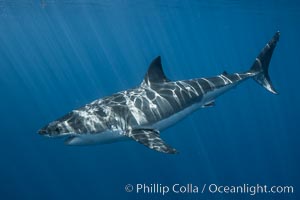
Great white shark, research identification photograph. A great white shark is countershaded, with a dark gray dorsal color and light gray to white underside, making it more difficult for the shark's prey to see it as approaches from above or below in the water column. The particular undulations of the countershading line along its side, where gray meets white, is unique to each shark and helps researchers to identify individual sharks in capture-recapture studies. Guadalupe Island is host to a relatively large population of great white sharks who, through a history of video and photographs showing their countershading lines, are the subject of an ongoing study of shark behaviour, migration and population size.
Species: Great white shark, Carcharodon carcharias
Location: Guadalupe Island (Isla Guadalupe), Baja California, Mexico
Image ID: 28766
Species: Great white shark, Carcharodon carcharias
Location: Guadalupe Island (Isla Guadalupe), Baja California, Mexico
Image ID: 28766
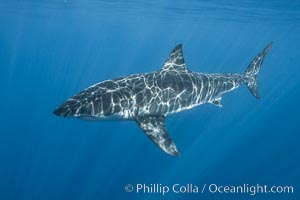
Great white shark, research identification photograph. A great white shark is countershaded, with a dark gray dorsal color and light gray to white underside, making it more difficult for the shark's prey to see it as approaches from above or below in the water column. The particular undulations of the countershading line along its side, where gray meets white, is unique to each shark and helps researchers to identify individual sharks in capture-recapture studies. Guadalupe Island is host to a relatively large population of great white sharks who, through a history of video and photographs showing their countershading lines, are the subject of an ongoing study of shark behaviour, migration and population size.
Species: Great white shark, Carcharodon carcharias
Location: Guadalupe Island (Isla Guadalupe), Baja California, Mexico
Image ID: 28767
Species: Great white shark, Carcharodon carcharias
Location: Guadalupe Island (Isla Guadalupe), Baja California, Mexico
Image ID: 28767
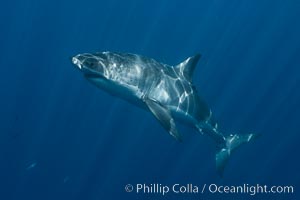
Great white shark, research identification photograph. A great white shark is countershaded, with a dark gray dorsal color and light gray to white underside, making it more difficult for the shark's prey to see it as approaches from above or below in the water column. The particular undulations of the countershading line along its side, where gray meets white, is unique to each shark and helps researchers to identify individual sharks in capture-recapture studies. Guadalupe Island is host to a relatively large population of great white sharks who, through a history of video and photographs showing their countershading lines, are the subject of an ongoing study of shark behaviour, migration and population size.
Species: Great white shark, Carcharodon carcharias
Location: Guadalupe Island (Isla Guadalupe), Baja California, Mexico
Image ID: 28769
Species: Great white shark, Carcharodon carcharias
Location: Guadalupe Island (Isla Guadalupe), Baja California, Mexico
Image ID: 28769
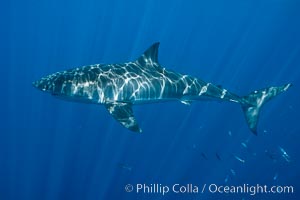
Great white shark, research identification photograph. A great white shark is countershaded, with a dark gray dorsal color and light gray to white underside, making it more difficult for the shark's prey to see it as approaches from above or below in the water column. The particular undulations of the countershading line along its side, where gray meets white, is unique to each shark and helps researchers to identify individual sharks in capture-recapture studies. Guadalupe Island is host to a relatively large population of great white sharks who, through a history of video and photographs showing their countershading lines, are the subject of an ongoing study of shark behaviour, migration and population size.
Species: Great white shark, Carcharodon carcharias
Location: Guadalupe Island (Isla Guadalupe), Baja California, Mexico
Image ID: 28770
Species: Great white shark, Carcharodon carcharias
Location: Guadalupe Island (Isla Guadalupe), Baja California, Mexico
Image ID: 28770
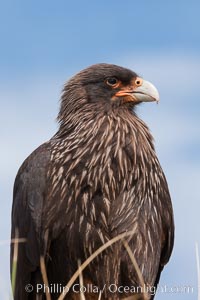
Straited caracara, a bird of prey found throughout the Falkland Islands. The striated caracara is an opportunistic feeder, often scavenging for carrion but also known to attack weak or injured birds.
Species: Striated caracara, Phalcoboenus australis
Location: Steeple Jason Island, Falkland Islands, United Kingdom
Image ID: 24206
Species: Striated caracara, Phalcoboenus australis
Location: Steeple Jason Island, Falkland Islands, United Kingdom
Image ID: 24206
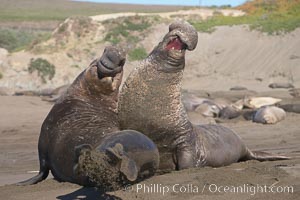
Male elephant seals (bulls) rear up on their foreflippers and fight for territory and harems of females. Bull elephant seals will haul out and fight from December through March, nearly fasting the entire time as they maintain their territory and harem. They bite and tear at each other on the neck and shoulders, drawing blood and creating scars on the tough hides. Sandy beach rookery, winter, Central California.
Species: Elephant seal, Mirounga angustirostris
Location: Piedras Blancas, San Simeon, California
Image ID: 15393
Species: Elephant seal, Mirounga angustirostris
Location: Piedras Blancas, San Simeon, California
Image ID: 15393
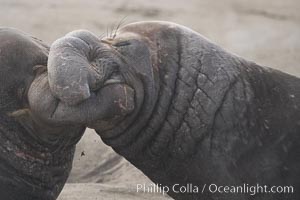
Male elephant seals (bulls) rear up on their foreflippers and fight for territory and harems of females. Bull elephant seals will haul out and fight from December through March, nearly fasting the entire time as they maintain their territory and harem. They bite and tear at each other on the neck and shoulders, drawing blood and creating scars on the tough hides.
Species: Elephant seal, Mirounga angustirostris
Location: Piedras Blancas, San Simeon, California
Image ID: 20375
Species: Elephant seal, Mirounga angustirostris
Location: Piedras Blancas, San Simeon, California
Image ID: 20375
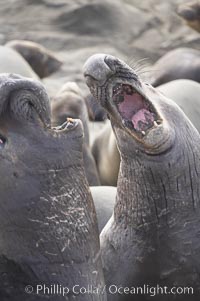
Male elephant seals (bulls) rear up on their foreflippers and fight for territory and harems of females. Bull elephant seals will haul out and fight from December through March, nearly fasting the entire time as they maintain their territory and harem. They bite and tear at each other on the neck and shoulders, drawing blood and creating scars on the tough hides.
Species: Elephant seal, Mirounga angustirostris
Location: Piedras Blancas, San Simeon, California
Image ID: 20413
Species: Elephant seal, Mirounga angustirostris
Location: Piedras Blancas, San Simeon, California
Image ID: 20413
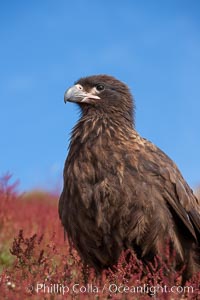
Straited caracara, a bird of prey found throughout the Falkland Islands. The striated caracara is an opportunistic feeder, often scavenging for carrion but also known to attack weak or injured birds.
Species: Striated caracara, Phalcoboenus australis
Location: Steeple Jason Island, Falkland Islands, United Kingdom
Image ID: 24083
Species: Striated caracara, Phalcoboenus australis
Location: Steeple Jason Island, Falkland Islands, United Kingdom
Image ID: 24083
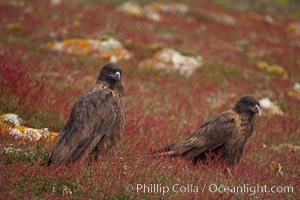
Straited caracara, a bird of prey found throughout the Falkland Islands. The striated caracara is an opportunistic feeder, often scavenging for carrion but also known to attack weak or injured birds.
Species: Striated caracara, Phalcoboenus australis
Location: Steeple Jason Island, Falkland Islands, United Kingdom
Image ID: 24127
Species: Striated caracara, Phalcoboenus australis
Location: Steeple Jason Island, Falkland Islands, United Kingdom
Image ID: 24127
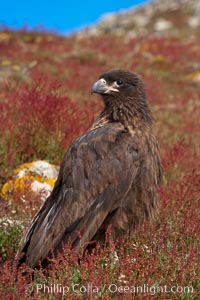
Straited caracara, a bird of prey found throughout the Falkland Islands. The striated caracara is an opportunistic feeder, often scavenging for carrion but also known to attack weak or injured birds.
Species: Striated caracara, Phalcoboenus australis
Location: Steeple Jason Island, Falkland Islands, United Kingdom
Image ID: 24162
Species: Striated caracara, Phalcoboenus australis
Location: Steeple Jason Island, Falkland Islands, United Kingdom
Image ID: 24162
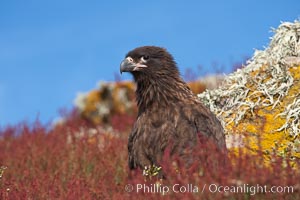
Straited caracara, a bird of prey found throughout the Falkland Islands. The striated caracara is an opportunistic feeder, often scavenging for carrion but also known to attack weak or injured birds.
Species: Striated caracara, Phalcoboenus australis
Location: Steeple Jason Island, Falkland Islands, United Kingdom
Image ID: 24273
Species: Striated caracara, Phalcoboenus australis
Location: Steeple Jason Island, Falkland Islands, United Kingdom
Image ID: 24273
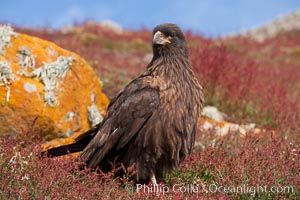
Straited caracara, a bird of prey found throughout the Falkland Islands. The striated caracara is an opportunistic feeder, often scavenging for carrion but also known to attack weak or injured birds.
Species: Striated caracara, Phalcoboenus australis
Location: Steeple Jason Island, Falkland Islands, United Kingdom
Image ID: 24274
Species: Striated caracara, Phalcoboenus australis
Location: Steeple Jason Island, Falkland Islands, United Kingdom
Image ID: 24274
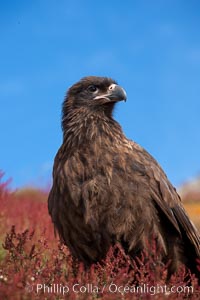
Straited caracara, a bird of prey found throughout the Falkland Islands. The striated caracara is an opportunistic feeder, often scavenging for carrion but also known to attack weak or injured birds.
Species: Striated caracara, Phalcoboenus australis
Location: Steeple Jason Island, Falkland Islands, United Kingdom
Image ID: 24276
Species: Striated caracara, Phalcoboenus australis
Location: Steeple Jason Island, Falkland Islands, United Kingdom
Image ID: 24276
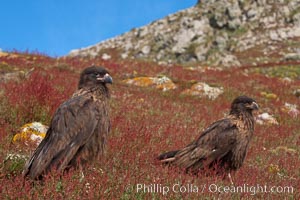
Straited caracara, a bird of prey found throughout the Falkland Islands. The striated caracara is an opportunistic feeder, often scavenging for carrion but also known to attack weak or injured birds.
Species: Striated caracara, Phalcoboenus australis
Location: Steeple Jason Island, Falkland Islands, United Kingdom
Image ID: 24277
Species: Striated caracara, Phalcoboenus australis
Location: Steeple Jason Island, Falkland Islands, United Kingdom
Image ID: 24277
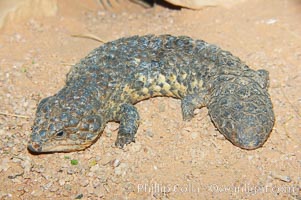
Shingleback lizard. This lizard has a fat tail shaped like its head, which can fool predators into attacking the wrong end of the shingleback.
Species: Shingleback lizard, Trachydosaurus
Image ID: 12571
Species: Shingleback lizard, Trachydosaurus
Image ID: 12571
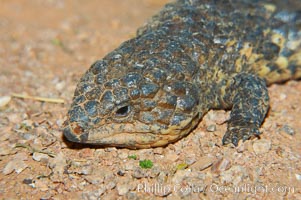
Shingleback lizard. This lizard has a fat tail shaped like its head, which can fool predators into attacking the wrong end of the shingleback.
Species: Shingleback lizard, Trachydosaurus
Image ID: 12572
Species: Shingleback lizard, Trachydosaurus
Image ID: 12572
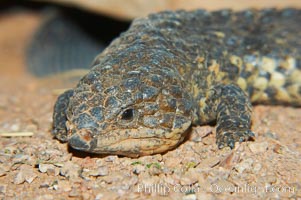
Shingleback lizard. This lizard has a fat tail shaped like its head, which can fool predators into attacking the wrong end of the shingleback.
Species: Shingleback lizard, Trachydosaurus
Image ID: 12573
Species: Shingleback lizard, Trachydosaurus
Image ID: 12573
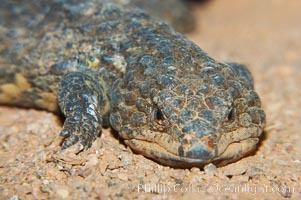
Shingleback lizard. This lizard has a fat tail shaped like its head, which can fool predators into attacking the wrong end of the shingleback.
Species: Shingleback lizard, Trachydosaurus
Image ID: 12574
Species: Shingleback lizard, Trachydosaurus
Image ID: 12574
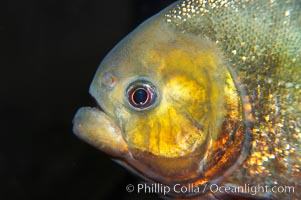
Red piranha, a fierce predatory freshwater fish native to South American rivers. Its reputation for deadly attacks is legend.
Species: Red piranha, Pygocentrus nattereri
Image ID: 14701
Species: Red piranha, Pygocentrus nattereri
Image ID: 14701
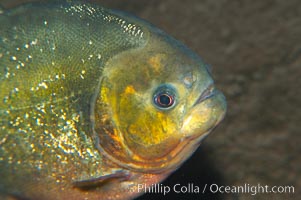
Red piranha, a fierce predatory freshwater fish native to South American rivers. Its reputation for deadly attacks is legend.
Species: Red piranha, Pygocentrus nattereri
Image ID: 14702
Species: Red piranha, Pygocentrus nattereri
Image ID: 14702
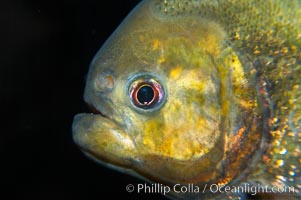
Red piranha, a fierce predatory freshwater fish native to South American rivers. Its reputation for deadly attacks is legend.
Species: Red piranha, Pygocentrus nattereri
Image ID: 14703
Species: Red piranha, Pygocentrus nattereri
Image ID: 14703
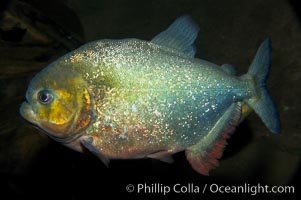
Red piranha, a fierce predatory freshwater fish native to South American rivers. Its reputation for deadly attacks is legend.
Species: Red piranha, Pygocentrus nattereri
Image ID: 14704
Species: Red piranha, Pygocentrus nattereri
Image ID: 14704
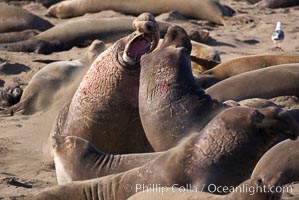
Male elephant seals (bulls) rear up on their foreflippers and fight for territory and harems of females. Bull elephant seals will haul out and fight from December through March, nearly fasting the entire time as they maintain their territory and harem. They bite and tear at each other on the neck and shoulders, drawing blood and creating scars on the tough hides. Sandy beach rookery, winter, Central California.
Species: Elephant seal, Mirounga angustirostris
Location: Piedras Blancas, San Simeon, California
Image ID: 15395
Species: Elephant seal, Mirounga angustirostris
Location: Piedras Blancas, San Simeon, California
Image ID: 15395
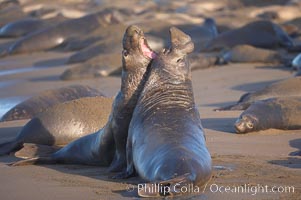
Male elephant seals (bulls) rear up on their foreflippers and fight for territory and harems of females. Bull elephant seals will haul out and fight from December through March, nearly fasting the entire time as they maintain their territory and harem. They bite and tear at each other on the neck and shoulders, drawing blood and creating scars on the tough hides. Sandy beach rookery, winter, Central California.
Species: Elephant seal, Mirounga angustirostris
Location: Piedras Blancas, San Simeon, California
Image ID: 15396
Species: Elephant seal, Mirounga angustirostris
Location: Piedras Blancas, San Simeon, California
Image ID: 15396
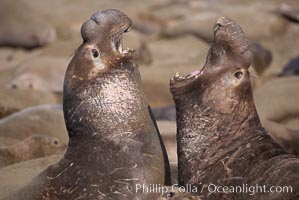
Male elephant seals (bulls) rear up on their foreflippers and fight for territory and harems of females. Bull elephant seals will haul out and fight from December through March, nearly fasting the entire time as they maintain their territory and harem. They bite and tear at each other on the neck and shoulders, drawing blood and creating scars on the tough hides. Sandy beach rookery, winter, Central California.
Species: Elephant seal, Mirounga angustirostris
Location: Piedras Blancas, San Simeon, California
Image ID: 15397
Species: Elephant seal, Mirounga angustirostris
Location: Piedras Blancas, San Simeon, California
Image ID: 15397
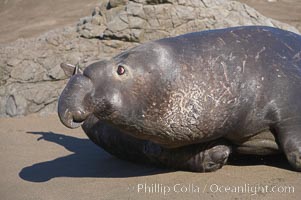
An adult male elephant seal, rushing to attack another male intruding on his territory, tramples a tiny pup. Pups experience a high mortality rate, including injury, separation from mother, being washed into the ocean and abandonment.
Species: Elephant seal, Mirounga angustirostris
Location: Piedras Blancas, San Simeon, California
Image ID: 15423
Species: Elephant seal, Mirounga angustirostris
Location: Piedras Blancas, San Simeon, California
Image ID: 15423